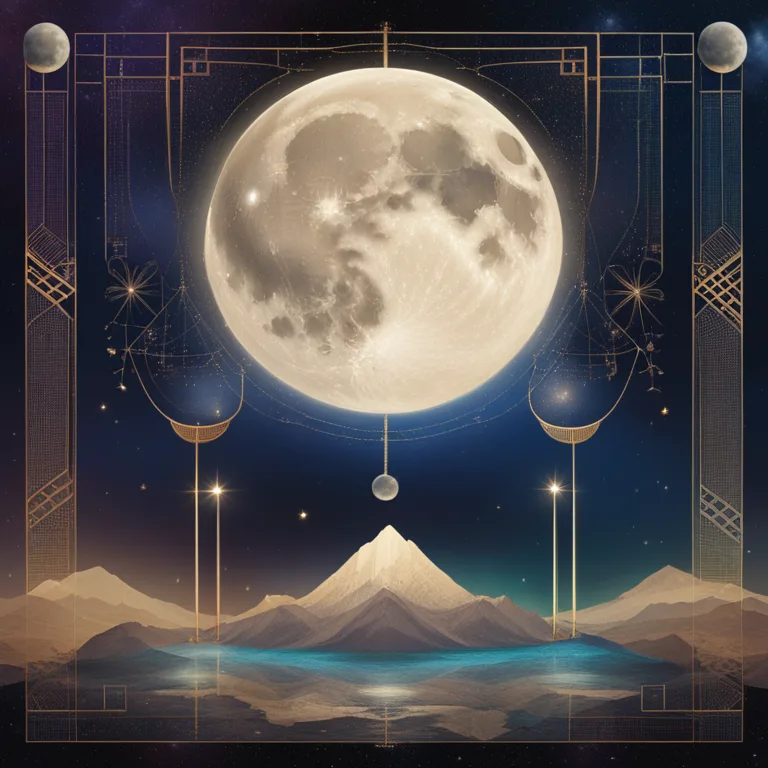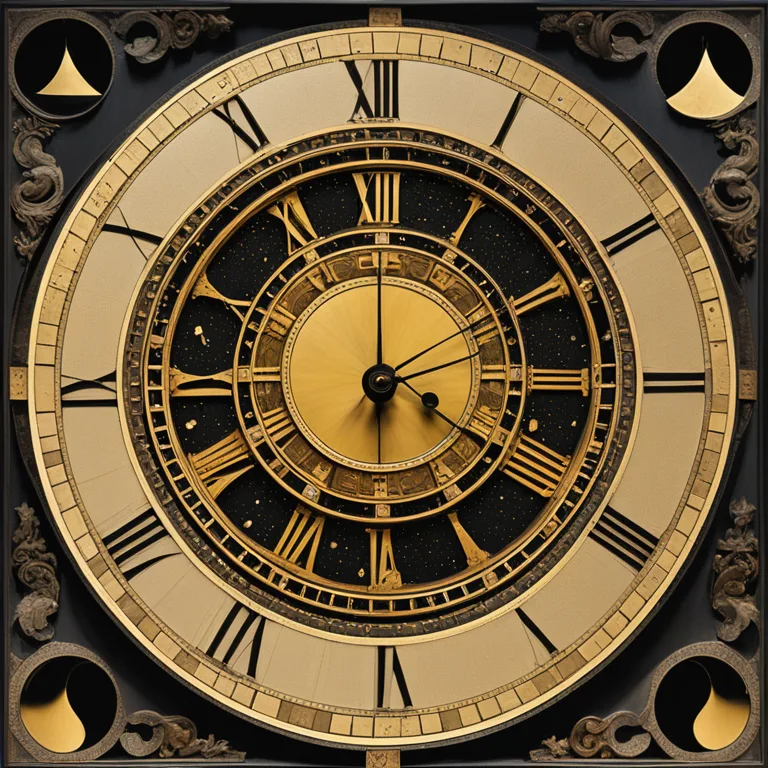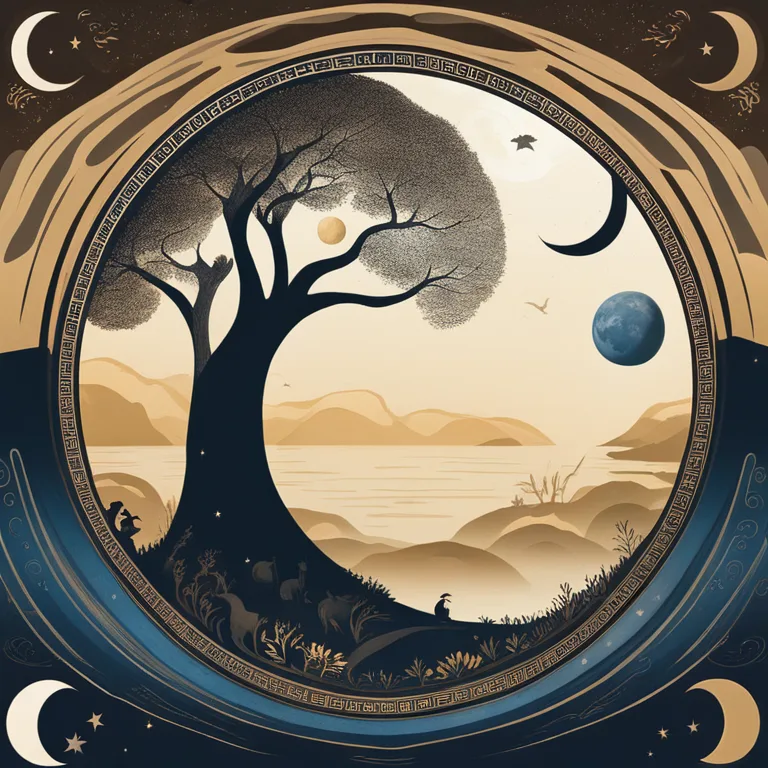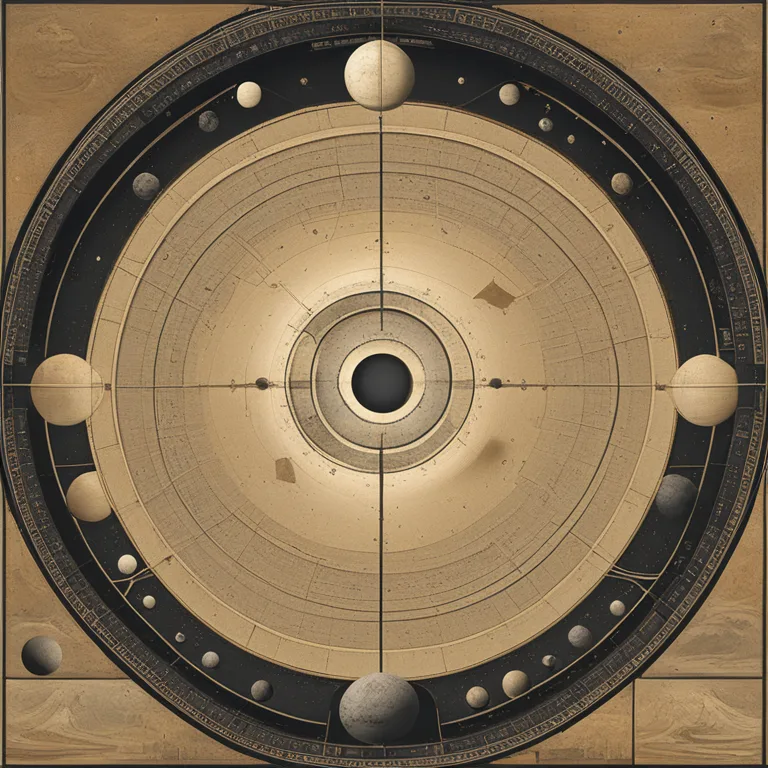
The Luminous Legacy of Lunar Phases
An insightful journey through the historical significance of moon phases and their impact on beliefs and practices throughout time.
article by Priya Deshmukh
The Celestial Clockwork
The Moon, Earth's steadfast companion in the cosmos, has served as a celestial timekeeper for eons. Its various phases have etched a rhythm into the fabric of life, governing tides, influencing cultures, and guiding agricultural practices. Early civilizations, attuned to the Moon's cyclical pattern, demarcated time into months based on its waxing and waning. These lunar cycles were crucial markers for organizing societies, arranging calendars, and navigating the ocean's vast expanse.

Ancient Moon Observations
The history of observing lunar phases stretches back to antiquity. Stone Age monuments like the eerily precise Stonehenge, or the enigmatic carvings of the Lascaux Caves, hint at mankind's age-old lunar observations. The Babylonians, proficient in the astral sciences, meticulously recorded the lunar movements, relating them to celestial omens. Their understanding laid the groundwork for future astrological practices and the continuous curiosity that would fuel humanity's study of the heavens.

Cultural Moon Myths
Across continents and cultures, the Moon's presence has been woven into a rich tapestry of mythology and lore. In many traditions, its phases symbolize the cyclical nature of life, from birth to death and rebirth. The waxing crescent was often seen as a sign of hope and new beginnings, while the full moon was associated with completion and power. Diverse societies, from the Greeks and Romans to the indigenous tribes of the Americas, have had their rituals and gods intimately connected with the lunar cycle.

Astrological Significance
Astrologically, lunar phases have great significance. Each phase, from the New Moon to the Waning Crescent, is believed to influence personal and collective energies in different ways. For instance, the Full Moon in 2024 is bound to intensify emotions and illuminate hidden truths, while the New Moon offers a fresh start, inviting individuals to set intentions and plant seeds for future endeavors. These forecasts guide individuals in timing their actions harmoniously with lunar rhythms.

The Lunar Calendar Evolution
The Islamic Hijri and traditional Chinese calendars are among the enduring lunar calendars still in use today, attesting to the Moon's historical role in timekeeping. With months directly correlated to the Moon's cycle, they stand as living artifacts of an era when the night sky was humanity's primary celestial guide. Even as the Gregorian calendar has become the global standard, these lunar calendars remind us of a time when our lives were more closely intertwined with the heavens' cycles.
Modern Lunar Research
Today, our fascination with lunar phases continues unabated. Modern science has demystified much of the Moon's magic, yet it has also deepened our appreciation for this natural satellite. Through space missions and lunar landings, we've unraveled some of the Moon's secrets, such as its geological history and potential resources. Ongoing research and upcoming lunar missions planned post-2024 aim to harness the Moon for scientific advancement and space exploration.
Published: 12/22/2023
Modified: 12/22/2023
More predictions
Come back here soon to learn more about yourself and your future


Moon Phases and Soulmate Connection
Discover how lunar cycles may influence soulmate encounters and the intertwining of destinies.


The Phases of the Moon: A Full Guide
Discover the different phases of the Moon and their significance in our celestial calendar.


Moon Phases & Soulmate Connections
Discover how lunar cycles may influence your search for a soulmate and deepen romantic bonds in this celestial guide.